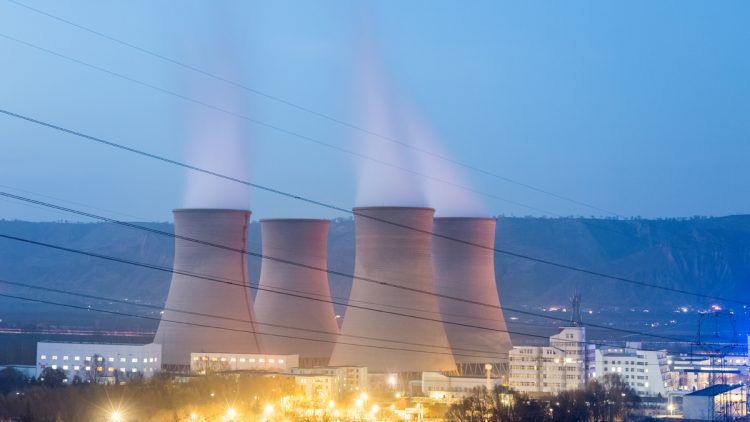What Gas Is Commonly Released By The Cooling Tower?
One common question many have regarding cooling towers is what exactly gets released from these structures. Water vapor (or steam) is what’s produced from the top of these towers.
What Is A Cooling Tower?
The processes and machines of industry in addition to the machines dedicated to our own comfort and well-being, produce a tremendous amount of heat. If that heat is not continuously dissipated those processes or machines will not be able to continue to operate efficiently.
Much like the heat from the motor in your car is transferred via a fluid to the radiator; cooling towers continuously transfer heat via a flowing volume of water from the air conditioning condenser or high heat equipment to the cooling tower area. Final heat rejection is always done through one or another type of heat rejection, but is also exhausted into the atmosphere.
Natural processes of evaporation are very effective heat transfer methods; however they are limited because of their total dependence on random winds and limited surface area. We’ve all experienced those super hot summer days where we are dying for a breeze. The first and most basic system of evaporation is air flow, which is a natural form of evaporation cooling. Before man had electricity we had hand held fans, which uses the same foundation concept that a cooling tower does to cause heat exchange and rejection.
What Gas Is Released By Cooling Towers?
Thermoelectric power plants, no matter if they are fossil-fueled or nuclear, require water cooling systems for optimal performance. The fuel will heat the water, eventually turning it into steam.
This steam drives a turbine generator to generate electricity. Once used to turn the turbine, the steam will be recycled back into the water for reuse. To reuse the steam, it will be cooled and condensed back into water.
How Do Cooling Towers Work?
They are high output heat rejection equipment used for cooling large commercial buildings, power plants or mechanical equipment in industrial applications. Water that has been heated by either an industrial process or an air conditioning condenser is passed through a cooling tower via a pump system.
That water is then sprayed through nozzles onto pads of material called “fill”. As the water hits this fill material it is spread as wide as possible to maximize the air-water contact. The water is then pulled through the system via an electrical motorized fan.
Cooling towers work by extracting waste heat and exhausting it into the atmosphere through the cooling of a stream of water to a very lower temperature. Cooling towers are a type of hear rejection system that is know as “evaporative”. This is because they allow a small portion of the cooled water to evaporate into a flowing stream of air to cause significant cooling to the remaining stream of water. Using a hot water system heat and humidity is transferred to the air in the cooling tower.
This raises the temperature of the air and the humidity to 100%, and then with the natural characteristic of hot air, it rises out of the cooling tower a bit like sweat cooling our skin. Significantly lower temperatures for the cooled water are possible with this evaporation heat rejection technology.
Once-Through System
The majority of power plants will utilize either a once-through or closed loop system. In the once-through system, water will be drawn through a water source like a nearby pond, river, or lake.
This water will pass through a condenser where it absorbs the heat from. The steam is then returned to where it came from, but ultimately at a much higher temperature.
Closed Loop System
In this system, condenser cooling water will be circulated to remove the extra heat it has gained. Water will be pumped to the top of the towers where it is allowed to pour down throughout the structure.
At the very same time, a set of fans at the top of the towers pull air up through the condenser water. Once cooled, this water flows back into the turbine building to start condensing steam once again.
Cooling Tower Maintenance Services
All Kote Lining, Inc. is the one-stop solution for all your cooling tower maintenance, repair, and replacement needs in Phoenix Valley. Our team of experienced technicians will ensure your cooling system issues are identified and solved in a timely and effective manner, saving you considerable money on electrical expenses in the process.


One thought on “What Gas Is Commonly Released By The Cooling Tower?”